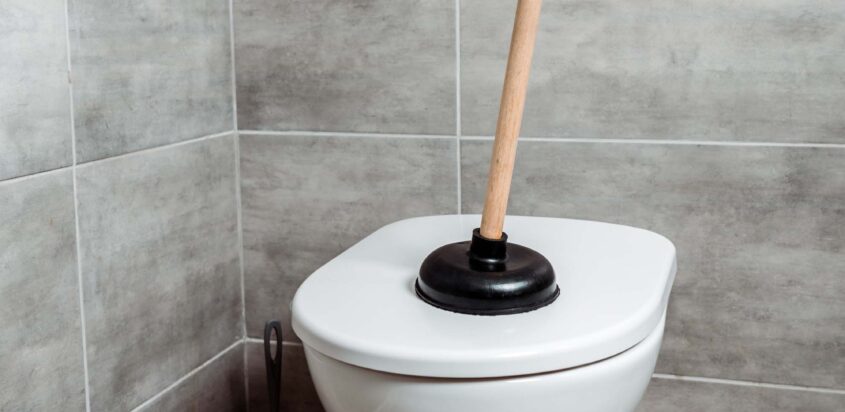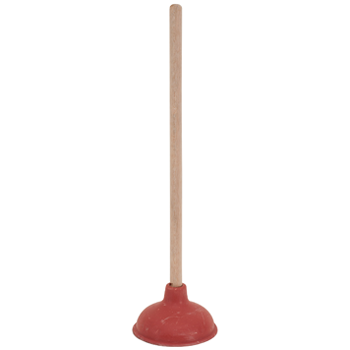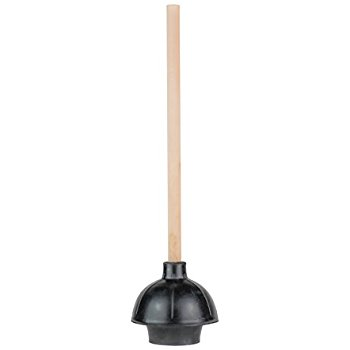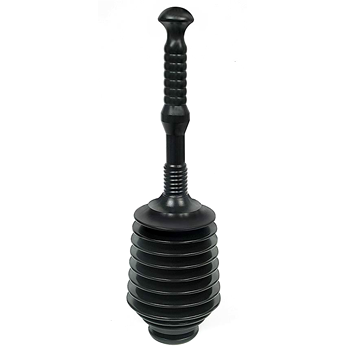
It seems pretty simple, right? There is a clog, so you grab your plunger and start looking at it to fix the issue. Would you believe me if I told you there is much more to it than that? Multiple plungers exist for different tasks, but improper use can damage your pipes and drains.
Types Of Plungers

Cup Plunger
The cup plunger is probably the most common household item. You see it in almost every house you visit. Oddly enough, this plunger is usually located near the toilet; however, it is not designed for plunging your toilet. The flat rim and surface of the cup plunger do not fit properly in the curve of a toilet bowl, so there is a plunger specifically designed for this purpose.

Flange Plunger
Despite common knowledge, the flange plunger is preferred for use on a household toilet. The tapered cup at the bottom of the plunger allows the area to fit perfectly down on the toilet drain. This allows maximum suction ability in a curved area like your toilet bowl. The cup on the bottom of this extremely versatile plunger can also be pushed back into the plunger, making it a cup plunger.

Accordion Plunger
The accordion plunger is the least likely to enter your home. However, its hard plastic makes creating suction on a toilet bowl or drain very challenging. To be “easy and efficient,” we will skip over the accordion plunger and promote the use of the flange plunger.
Unclogging Your Toilet Drain
As mentioned, the cup plunger is the most common in today’s households. However, this plunger is NOT the most efficient when removing a clog from your toilet. Instead, it is recommended to use a flange plunger, which allows the cup to fit the curve of your toilet bowl. If used properly, the plunger can generate both forward and backward pressure.
Step 1
Be sure to hold the plunger straight up and down and submerge it in water. This will help provide a tighter seal of suction in the drain. If there is not enough water, add some.
Step 2
To remove air from the plunger, gently push down until fully compressed, then slowly create suction back and forth.
Step 3
Break the seal after 1 or 2 back-and-forths on the plunger and check if the water drains down. If not, repeat the steps until the clog is removed from the drain.
Using Chemicals
Using chemicals when unclogging your drains is the LAST thing you want to do. Most store-bought chemicals are very harsh on the piping in your home, and the last thing we want to do is damage that plumbing. That is the difference between getting an oil change and having the engine worked on. You will avoid tons of future maintenance by simply cleaning your drains and caring for the plumbing in your home.
There are, of course, alternatives to using harsh chemicals on your home’s drains. Some people believe that using baking soda and vinegar flushed with hot water is a good way to clean your drain. Others believe that the power of dish detergent and hot water is much better when trying to accomplish this task. Whatever path you choose, it is good to know there are options other than store-bought chemicals.
Plunging Sink and Tub Drains
At times, it may seem like we need to plunge our sinks or tubs due to excessively backed-up water and yuckiness. In today’s drains in bathrooms and kitchens, they use a p-trap. These are just a few (usually) PVC pipes put together to make a shape resembling the letter P. The U shape in the piping is used to stop nasty-smelling gasses from returning to the drain and into your home. If you use a plunger on a system such as this, you stand a VERY good chance of damaging it, and most likely, it will not fix your issue. If there is a clog in the trap, you can unscrew the two sides that hold the U portion of the trap in place, remove it, clean it, and put it back in place. Be sure that all the pieces are secured before running the water again. If this does not stop the issue, it could mean an object lodged in the piping from the sink to the U portion of the trap, something that harsh chemicals or a plunger would be overkill for. Sometimes, using either hot water or dish detergent can work just fine. Make sure the p-trap is in place before running any water. If this does not work, try using a wire hanger to loosen whatever is stuck. My house has had anything from crayons to make-up brushes and even large amounts of toilet paper. Simply pushing or loosening it so it falls is the best way.
The plumbing in your house is very sturdy and very time-tested. However, if not treated properly, we can undo all this and seemingly destroy it. So take our advice and only plunge your toilet with a flange plunger and use hot water and dish detergent to clear clogs in your sink or tub drains. Never plunge your sink or tub!
If you rent from us at Buckeye Northwest Realty, you can contact us anytime to find more ways to help clear a clog in one of your home’s drains. We are here to help, so don’t hesitate!





